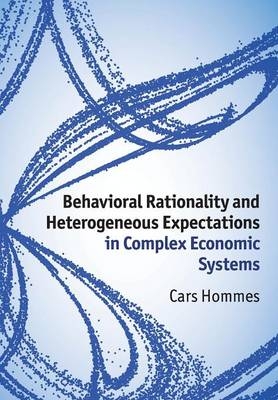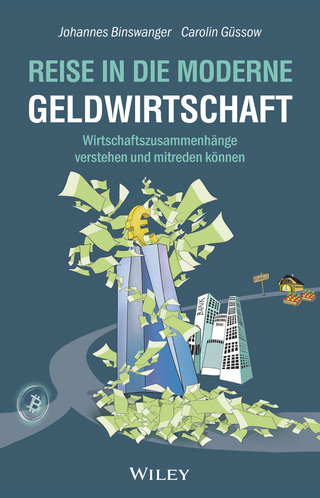
Behavioral Rationality and Heterogeneous Expectations in Complex Economic Systems
Seiten
2015
Cambridge University Press (Verlag)
978-1-107-56497-8 (ISBN)
Cambridge University Press (Verlag)
978-1-107-56497-8 (ISBN)
Recognising that the economy is a complex system with boundedly rational interacting agents, the book presents a theory of behavioural rationality and heterogeneous expectations in economic systems, helping students, researchers and policy makers to build more realistic behavioural models in order to better manage crises in a complex global economy.
Recognising that the economy is a complex system with boundedly rational interacting agents, the book presents a theory of behavioral rationality and heterogeneous expectations in complex economic systems and confronts the nonlinear dynamic models with empirical stylized facts and laboratory experiments. The complexity modeling paradigm has been strongly advocated since the late 1980s by some economists and by multidisciplinary scientists from various fields, such as physics, computer science and biology. More recently the complexity view has also drawn the attention of policy makers, who are faced with complex phenomena, irregular fluctuations and sudden, unpredictable market transitions. The complexity tools - bifurcations, chaos, multiple equilibria - discussed in this book will help students, researchers and policy makers to build more realistic behavioral models with heterogeneous expectations to describe financial market movements and macro-economic fluctuations, in order to better manage crises in a complex global economy.
Recognising that the economy is a complex system with boundedly rational interacting agents, the book presents a theory of behavioral rationality and heterogeneous expectations in complex economic systems and confronts the nonlinear dynamic models with empirical stylized facts and laboratory experiments. The complexity modeling paradigm has been strongly advocated since the late 1980s by some economists and by multidisciplinary scientists from various fields, such as physics, computer science and biology. More recently the complexity view has also drawn the attention of policy makers, who are faced with complex phenomena, irregular fluctuations and sudden, unpredictable market transitions. The complexity tools - bifurcations, chaos, multiple equilibria - discussed in this book will help students, researchers and policy makers to build more realistic behavioral models with heterogeneous expectations to describe financial market movements and macro-economic fluctuations, in order to better manage crises in a complex global economy.
Cars Hommes is Professor of Economic Dynamics at the University of Amsterdam (UvA). After his PhD in Mathematical Economics at the University of Groningen, he founded the Center of Nonlinear Dynamics in Economics and Finance (CeNDEF), an interdisciplinary research group at UvA, pursuing theoretical, experimental and empirical research on complex systems, bounded rationality and behavioral agent-based models in economics and finance.
1. Introduction; 2. Bifurcations and chaos in 1-D systems; 3. Bifurcations and strange attractors in 2-D systems; 4. The nonlinear cobweb model; 5. The cobweb model with heterogeneous expectations; 6. An asset pricing model with heterogeneous beliefs; 7. Empirical validation; 8. Laboratory experiments.
| Zusatzinfo | 93 Line drawings, unspecified |
|---|---|
| Verlagsort | Cambridge |
| Sprache | englisch |
| Maße | 170 x 244 mm |
| Gewicht | 440 g |
| Themenwelt | Wirtschaft ► Volkswirtschaftslehre ► Mikroökonomie |
| ISBN-10 | 1-107-56497-2 / 1107564972 |
| ISBN-13 | 978-1-107-56497-8 / 9781107564978 |
| Zustand | Neuware |
| Haben Sie eine Frage zum Produkt? |
Mehr entdecken
aus dem Bereich
aus dem Bereich
Wirtschaftszusammenhänge verstehen und mitreden können
Buch | Softcover (2023)
Wiley-VCH (Verlag)
19,99 €
die psychologischen Determinanten menschlicher Entscheidungen
Buch | Softcover (2024)
Kohlhammer (Verlag)
39,00 €


